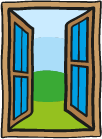Can Creative Writing Be Taught? | KS1 Literacy
An Active Imagination is Often Seen as One of The Gifts of Childhood.
The difference between ‘imagination’ and ‘creativity’ tends to happen when an idea becomes somewhat more tangible; at the very least, it needs to make its way out of one’s head and into the real world.
This is where creative writing comes in.
Once children have a grasp of literacy, they can make their first steps towards becoming the next Philip Pullman or Jacqueline Wilson – but as with all subjects, some children find this easier than others.
This often begs the question of whether creativity is a natural predisposition, as opposed to a skill that can be taught in the classroom.
According to George Land’s Creativity Test – a study into the creativity of 1,600 children, mirroring a test devised for NASA’s engineer and scientist selection – it’s actually non-creative behaviour which is learned, not the other way around.
For children, creativity is instinctive – but this readiness often evaporates when the pressures of growing up introduce fundamental ties of rules and regulations.
So, how can you foster the creative writing skills of the children in your class, while they’re still flourishing?
Here’s our top five tips for how creative writing can be taught.
1. Start with reading
As many good authors will tell you, being an excellent storyteller often starts with a love of books.
Reading will subconsciously instil the knowledge of how a story is put together, while also giving plenty of creative ideas that children can adapt for their own work.
Kitting out your classroom with a varied bookshelf, including fiction and non-fiction, will help children to not only find books to their liking, but give them an enviable vocabulary and eye for spelling (with time, of course).
2. It’s good to talk
 Ideas go on a journey. First, they’re in your head – then they travel to the pencil and paper.
Ideas go on a journey. First, they’re in your head – then they travel to the pencil and paper.
However, sometimes they get a bit stuck in-between; either as a crisis of confidence, or simply lacking the comprehension skills to organise the idea into a sentence that makes good sense.
To stop ideas getting lost, allow for some constructive ‘talking time’ before it’s time for the children to put their heads down to write. This should help them to sort their ideas logically, as well as getting some extra ideas from their classmates.
3. Draw inspiration from the everyday
Walking the dog with dad, eating Nutella sandwiches for lunch, getting stuck in a traffic jam on the way to school… these events may seem mundane, but many stories take influence from what we experience in day-to-day life.
Ask the class to write about what they already know – but add in a twist.
The familiar topic will inspire confidence and knowledge, while adding an exciting turn of events will transform the story into a creative masterpiece, with surprisingly little effort.
4. Plan for success
 Children often don’t see the merit in planning a story; it’s just unnecessary writing time, when they’d rather just get stuck in (or – depending on the child – not get started at all).
Children often don’t see the merit in planning a story; it’s just unnecessary writing time, when they’d rather just get stuck in (or – depending on the child – not get started at all).
However, with no plan in place, ideas can just trail off before they reach a crescendo – which is a bit of a waste of a lesson, all things considered.
Make story planning a habit before the ‘real’ work gets started, even if it’s just a few words to remind the budding author of their proposed beginning, middle and end.
Of course, it’s fine to change their mind if they discover a better idea once they get going; but having a plan of action is vital to a successful story.
5. Use your senses
Using our five senses – sight, sound, smell, taste and touch – will help to inject further creativity in their written work.
Don’t just tell the reader what you know – use your senses to explain it.
So, rather than just explain what you see on the beach during a summer’s day – smell the salty air, hear the crash of the waves, feel the sand beneath your toes and taste an impossibly large Mr Whippy while you’re at it.
It won’t be long until the reader feels like they’re a part of the story – which is the making of any fantastic writer!
Ready for even more ways to teach creative writing in your Primary classroom?
The award-winning Mighty Writer is a literacy resource which allows children to gain confidence in creative writing.

[1] https://www.creativityatwork.com/2012/03/23/can-creativity-be-taught/

